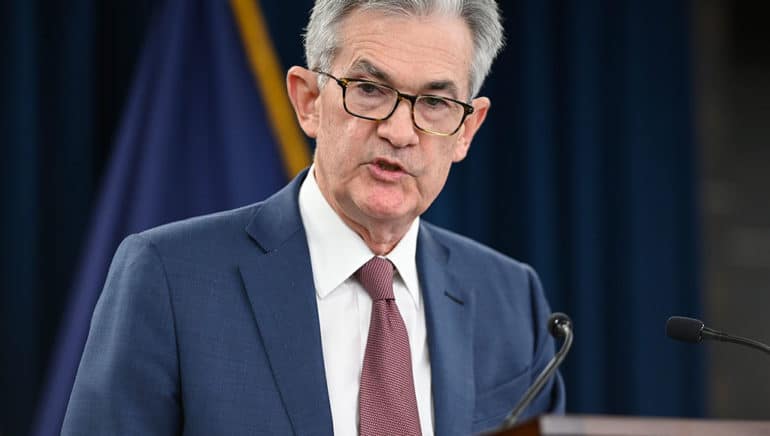Equities have been weaker in recent days. This is largely due to concerns that sooner-than-expected interest rate increases in the USA could be detrimental to the financial market In this blog entry, we are going to discuss why in the most likely case scenario, this will not be happening in the foreseeable future.
Average inflation targeting
Generally speaking, the Fed aims at two different goals, i.e. maximum employment and an inflation rate of 2% in the long run. In order to achieve these goals, the central bank introduced the so-called average inflation targeting last year.
Because inflation has been below 2% in the recent and medium-term past and there has been the risk of the long-term inflation expectations drifting towards zero (de-anchoring downwards), the Fed is currently aiming for an inflation of moderately above 2% for some time in order for inflation to be at 2% in the long run and inflation expectations to remain anchored at 2%. The core strategy of the Fed is to maintain its accommodating monetary policy for as long as these two goals (employment, inflation) have not been achieved.
Cornerstones
The Fed has defined two cornerstones. First, the key-lending rates will only be raised from the current bandwidth of 0% – 0.25% once maximum employment has been reached on the job market, inflation has increased to 2% and can be expected to remain moderately above 2% for a while. Second, the monthly bond purchases of USD 120bn will be maintained until significant steps towards the tow aforementioned goals have been made. Any tapering will be announced in good time.
Key parameter: inflation expectations
The Fed is really implementing a very cautious exit strategy from its ultra-expansive monetary stance. However, that should only work in the case of stable (i.e. not rising) long-term inflation expectations. Within only a year, the risk profile for inflation has shifted. At the moment, the inflation rates are distorted upwards in the wake of the lifting of the lockdown measures. That is a transitory problem.
However, there is a possible link between short-term elevated inflation and the long-term development of inflation: the long-term inflation expectations. If these increase because inflation rates are elevated for a limited amount of time (e.g. a year), a wage-price spiral may be set off.
This means that only once the long-term inflation expectations rise (de-anchoring upwards) will the Fed come under pressure to increase key-lending rates significantly sooner than expected. The numerous indicators on inflation expectations (i.e. consumers, companies, economists, and market participants) currently suggest stable expectations.
Less risk
At the Federal Open Market Committee (FOMC) last week, a driving factor (pandemic) triggered two events (for interest expectations and bond purchase). Due to the progress the various vaccination regimes have made, the Fed has revised the growth risk downwards. The forecast for economic growth in 2021 was revised upwards from 6.5% to 7%. Inflation expectations were also revised upwards, from 2.4% to 3.4%. The medium-term forecasts were revised only marginally (GDP 2023: 2.4%; inflation 2023: 2.2%
Earlier interest rate hike…
As a consequence of the fallen risk, the Fed indicated in its forward guidance that it would increase its rates slightly earlier than previously expected. Seven out of 18 members (i.e. the minority) expect at least one hike for 2022, and 13 out of 18 members (i.e. the majority) expect at least one for 2023 (median: two hikes). Back in March, the Fed was still standing by an unchanged key-lending rate for 2023. In our most likely scenario, the first interest rate hike will occur at the end of 2022.
…and tapering
The timeline towards tapering has entered a new stage. Until not long ago, Chairman Powell did not even want to talk about any future tapering. In the meantime, he has started talking about the ideal moment for announcing the tapering. In our most likely scenario, he will make the announcement in August 2021 (central bank meeting in Jackson Hole), and the tapering itself will commence in early 2022.
The Fed is not hawkish….
The progress of the cautious exit strategy has led to a repricing: a flatter yield curve (i.e. the yield difference between 30Y and 2Y government bonds), more robust USD (higher interest rates are supportive), lower inflation rate priced into the bond market (10Y breakeven inflation rate: 2.26%), higher real government bond yield (10Y TIPS yield: -0.79%), and falling share prices (especially cyclicals).
The market movements suggest that the market participants expect the Fed to assume a stance that fights inflation (i.e. a hawkish stance). In an environment of further progress of the economic recovery, the Fed would gradually (and not necessarily at every FOMC meeting) reduce its expansive monetary stance, at least in the forward guidance. As discussed above, the Fed policy will only turn (largely) hawkish if the long-term inflation expectations break out at the higher end. That is currently not the case.
…but dovish
Overall, the monetary stance of the Fed will remain very expansive and support risky assets (dovish stance). That being said, the negative market reaction has shown yet again that the markets are not overly stable and instead susceptible to a correction. We suggest that currently the biggest risk does not emanate from the monetary policy, but the covid pandemic. Another acceleration of new infections due to mutations (increasing number of delta clusters) constitutes a downside risk.
Sources: Bloomberg; Board of Governors of the Federal Reserve System
Legal note:
Prognoses are no reliable indicator for future performance.

